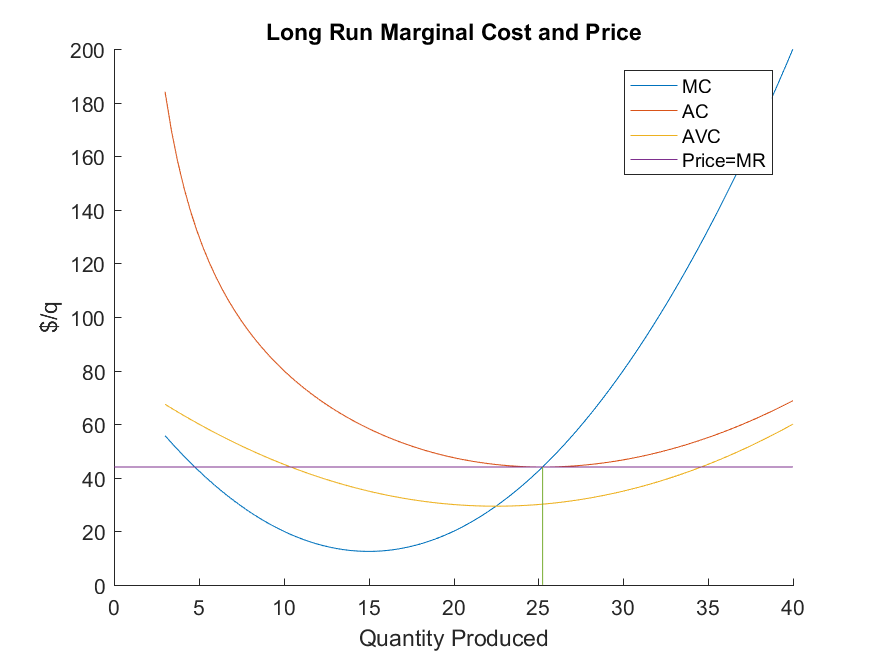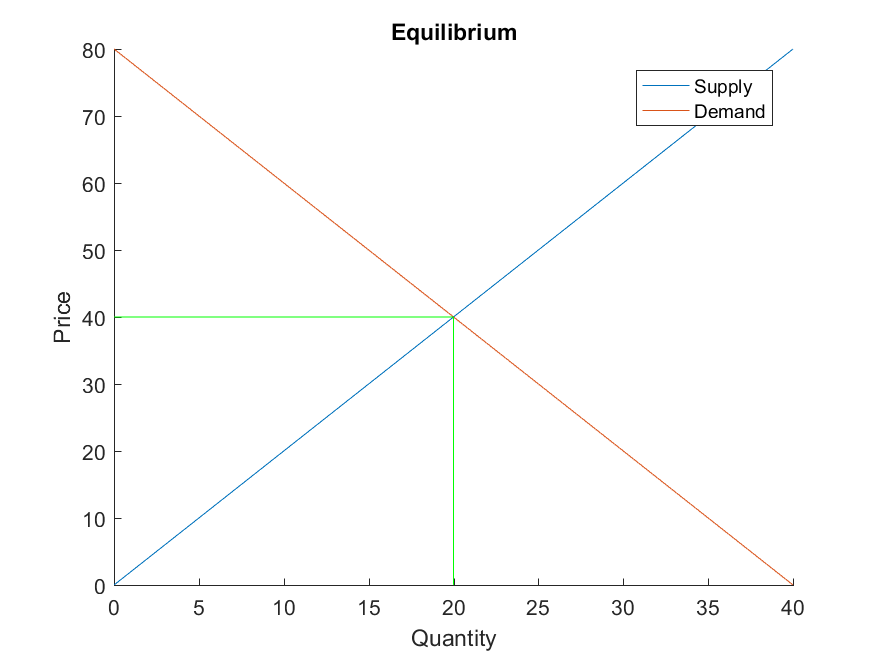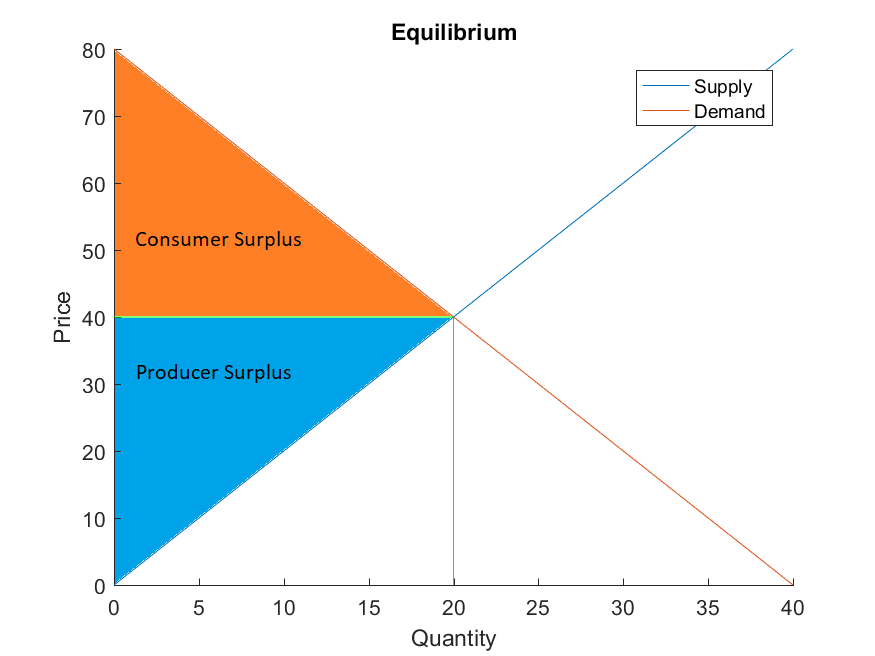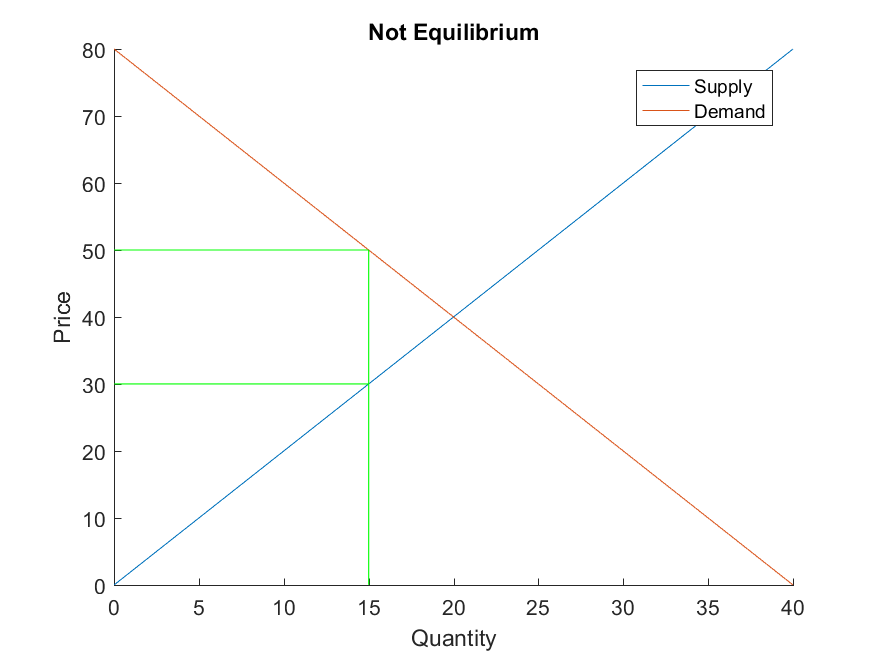Market Equilibrium
In the long run, firms in competitive markets make zero economic profit
- This requires that the market price is the minimum of the average cost curve
- Let’s consider two examples
Reaching market equilibrium: example 1
- Suppose the current market price is high enough such that all firms in the industry are
making a positive profit. This means the market price is above the lowest average cost
- Free entry allows any firm to enter the market
- Atomicity and equal access allow any single firm to make a positive profit with very little affect to the market price
- Eventually, so many firms enter the market that this competition drives the market price down until all firms earn zero profit
- When the market price creates zero profit, no new firm has incentive to enter and all active firms are indifferent between staying and leaving the market
Reaching market equilibrium: example 2
- Suppose the current market price is low enough such that all firms in the industry are
making a negative profit. This means the market price is below the lowest average cost
- Free entry allows any firm to exit the market
- Atomicity and equal access allow any single firm to make a negative profit and their exit will affect the market price very little
- Eventually, so many firms exit the market that this lack of competition drives up the market price until all firms earn zero profit
- When the market price creates zero profit, no new firm has incentive to enter and all active firms are indifferent between staying and leaving the market

- In a perfectly competitive market, the marginal revenue curve (market price) is tangent to the average cost curve at the lowest point
- More on this later today
Are perfectly competitive markets realistic?
- Not very often
- Atomicity fails when there are only a few firms
- Products are not always homogeneous (i.e. smart phones, cannabis, snowboards)
- Free entry is often violated by startup costs or exit costs (i.e. railroads, ski resorts)
- Sometimes a subset of these assumptions will hold
- The market for minimum wage jobs (workers are very similar and have no pricing power)
- The agricultural market (products are homogeneous, costs are similar)
- If these assumptions aren’t usually satisfied, then why do we care about this model?
- Perfectly competitive markets provide a useful benchmark
- From the perspective of an economist,
- Perfectly competitive markets (theoretically) eliminate deadweight loss
- Deadweight loss is welfare that could be collected by society, but is not collected
- This is a market inefficiency
- In order to formalize a measure of deadweight loss, we need to first discuss consumer surplus and producer surplus



